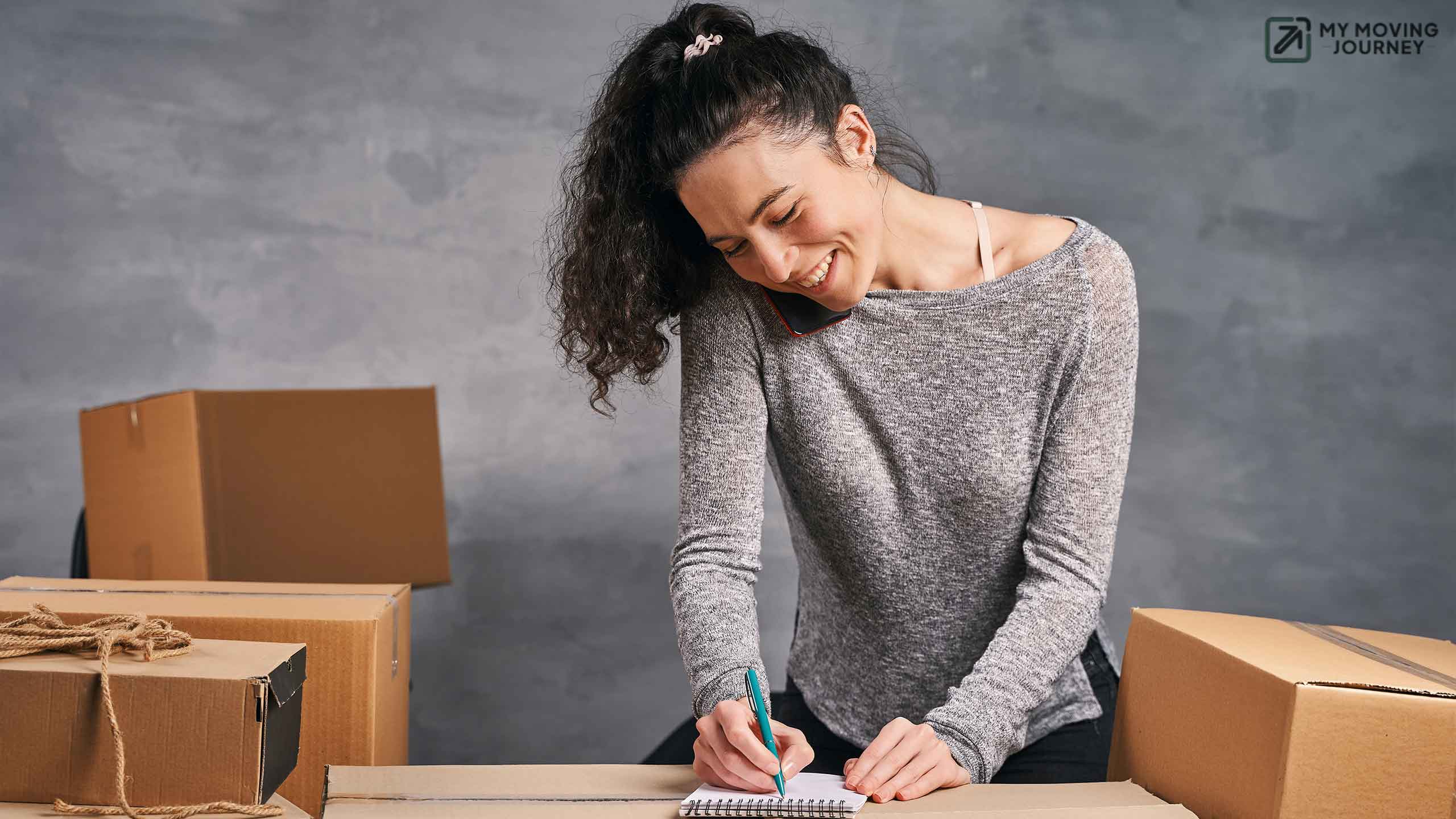Home is the starting place of love, hope, and dreams.
This saying holds a unique weight when you are preparing to move out for the first time.
It's a huge step, and yes, it can feel overwhelming.
Moving out is a thrilling leap, but it also comes with responsibilities, careful planning, and more than a few surprises.
Let’s put things in perspective.
In the United States, over 30 million Americans move yearly, but only a fraction of those are moving out for the first time.
A study shows that about 10% of young adults between 18 and 29 experience moving out for the first time.
This number reflects how crucial it is to plan this journey well.
First-time movers often face unexpected expenses, underestimated budgets, and unexpected hurdles that can make the process more challenging.
In fact, a recent survey found that the average American spends between $600 and $1,500 on their first move alone.
So, here you are, standing on the edge of independence, wondering if you’re ready.
You are not just moving boxes; you are creating a new space that’s entirely your own.
But before you start daydreaming about how to decorate, there’s the critical question of readiness.
Are you financially prepared?
Have you sorted out your moving logistics?
Do you know which documents you’ll need, which essentials to pack, and which steps to take to set up your utilities?
That’s why we have curated the ultimate moving out checklist that will guide you through each detail.
This isn’t just any checklist; it’s a resource designed to give you peace of mind.
Our goal is to make sure you have everything you need when moving out and to prepare you for this exciting step.
Financial Preparation
Before you even begin looking at places, it’s crucial to have a financial plan.
Here’s how to get financially ready:
Budget Your Living Expenses
Rent (Target 25-30% of monthly income)
Utilities: Electricity, water, gas, internet (estimate $100-$200/month combined)
Groceries: Average of $250-$300/month
Transportation: Public transit, gas, parking
Miscellaneous Expenses: Streaming services, dining out, entertainment
Build an Emergency Fund
Aim to save 3-6 months' worth of living expenses to cover any unexpected situations.
This fund can provide a buffer while you settle in and adjust to your new expenses.
Credit Score
Many landlords check credit scores before approval.
A credit score above 670 is often preferred for renters.
Set Up a Moving Budget
Account for costs like hiring movers, packing supplies, and deposits (first month’s rent, security deposit).
Find Your New Place
Key Considerations
So whenever you search for a new space, consider these points.
Location: Proximity to work or school, public transport accessibility and neighborhood safety.
Rent Affordability: Make sure your rent is within budget by calculating that it does not exceed 30% of your monthly income.
Lease Terms: Carefully review terms related to pets, subletting, maintenance responsibilities, and rent increases.
Additional Tips
Tour the Property: Check the water pressure, what heating/cooling systems are installed, whether there is sufficient natural light, etc.
Amenities Check: Review laundry, parking, security entrances, and whatever amenities fit your lifestyle.
Gather Essential Documentation
Landlords will ask for a few different documents to confirm your eligibility when you apply for an apartment or rental property.
Proof of Income: Recent pay stubs, bank statements, or an employment letter.
Photo Identification: A valid driver’s license or passport.
References: Contact information for previous landlords or professional references.
Credit Report: Some landlords also request a recent credit report.
Organize and Pack Your Belongings
Declutter and Sort
Before packing, check your belongings.
Donate, sell, or discard items you don’t need.
This will save time, space, and moving costs.
Packing Supplies Checklist
Boxes: Various sizes for different items (consider using sturdy boxes for fragile items).
Bubble Wrap & Packing Paper: Protects fragile items like glassware and electronics.
Markers: Label each box by room (e.g., “Kitchen,” “Bedroom”) and content category (e.g., “Fragile”).
Furniture Covers: Essential if you are moving large items like sofas or beds.
Packing Tips
Room-by-Room Approach: Pack one room at a time, keeping similar items together.
Essential Items Box: Pack a box with items you need immediately (toiletries, a change of clothes, basic cookware).
Label Everything: Clearly mark each box with its contents and destination room to make unpacking easier.
Moving Day Checklist
Moving Truck or Movers: Book your moving truck or moving service at least two weeks in advance.
Friends/Helpers: Confirm any friends or family who will be helping you on moving day.
Snacks and Water: Moving day can be exhausting; stay hydrated and energized!
Set Up Utilities and Essential Services
Essential Utilities
Electricity and Gas: Set up service with the local provider, often starting a few days before you move in.
Water and Sewer: Check if it's included in the rent; if not, set up an account with your local utility.
Trash and Recycling: Some areas require separate subscriptions, so confirm with your property manager or local municipality.
Internet and Cable
Compare providers for the best deals and make an appointment for installation.
Internet is needed from day one, so set it up before moving in.
Renter’s Insurance
Renter's insurance is highly recommended and protects belongings against theft, fire, or damage.
Plans start as low as $5 per month.
Change Your Address
Inform all relevant parties of your new address to check you receive bills, statements, and personal mail.
US Postal Service: Submit a change of address form online or at the post office.
Banks and Credit Cards: Update your address for all financial institutions.
Government Agencies: Notify the DMV, IRS, and Social Security, as applicable.
Subscriptions & Delivery Services: Update online shopping accounts, streaming services, and other subscriptions.
Furnish and Equip Your Home
Start with essentials and gradually add items as needed.
Here’s a room-by-room breakdown:
Bedroom Essentials
Bed Frame & Mattress: Purchase a high-quality mattress, as it can last years.
Storage: Dresser, closet organizers, or nightstand.
Bedding: Sheets, blankets, pillows, and a mattress cover.
Kitchen Essentials
Cookware: Pots, pans, and essential utensils (spatula, spoon, whisk).
Tableware: Plates, bowls, glasses, mugs, and cutlery.
Small Appliances: Microwave, toaster, coffee maker.
Living Room Essentials
Seating: Sofa or couch, plus chairs if space allows.
Table: Coffee table and/or side tables for convenience.
Lighting: Floor or table lamps to create a cozy atmosphere.
Bathroom Essentials
Shower Curtain & Bath Mat: This is for privacy and to prevent water spills.
Towels: Bath towels, hand towels, and washcloths.
Storage Solutions: Shower caddy, under-sink storage, or shelving for toiletries.
Safety and Maintenance
Smoke and Carbon Monoxide Detectors: Test before you move in and replace batteries yearly.
First Aid Kit: Have a kit containing basic supplies such as adhesive bandages, antiseptics and pain relievers.
Toolkit: Include essentials like a hammer, screwdrivers, pliers, and measuring tape.
Cleaning Supplies: Fill your house with basics like multipurpose cleaners, dish soap, sponges, and paper towels.
Know Your Neighborhood
Once you are settled in, take some time to familiarize yourself with the area.
Meet the Neighbors: A simple introduction can help create a friendly and supportive community.
Local Services: Explore nearby grocery stores, pharmacies, gas stations, and emergency services.
Social Groups: Join neighborhood or community groups to stay connected and updated on local happenings.






